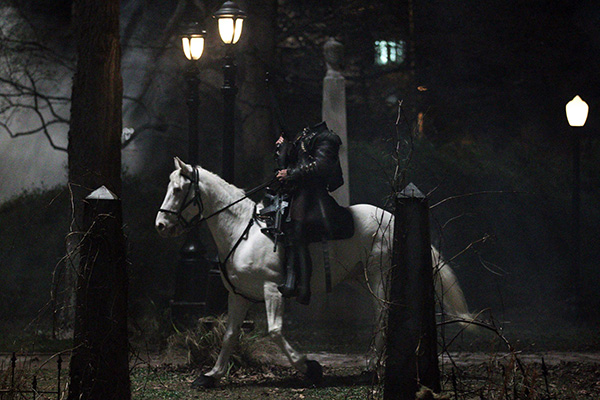ARTS ISSUE: Creators make ‘Sleepy Hollow’ laughable, annoying
December 5, 2013

“The Legend of Sleepy Hollow,” Washington Irving’s 1820 short story, has been adapted numerous times. Tim Burton’s film is probably the most famous, but many minds have taken advantage of the spooky decapitated specter.
FOX’s new version of the myth, Monday night’s “Sleepy Hollow,” has taken the story to new heights of outrageousness. In this incarnation, Ichabod Crane is a redcoat-turned-rebel spy from the American Revolution. He was cursed during the war when he beheaded a Hessian soldier, who then became the legendary Headless Horseman. During this altercation, Ichabod was also slain and the two victims’ blood mingled, linking them even in death. Ichabod’s wife (Katia Winter) also was a witch who put an enchantment on her husband, allowing him to reawaken in modern-day Sleepy Hollow — almost 250 years later.
To add to the program’s ridiculous agenda, the creators added a Biblical twist. Not only is the Horseman a creature of the undead, but he is also the animated incarnation of Death and one of the Four Horsemen of the Apocalypse. The reborn Crane must team up with local police Lt. Abbie Mills to stop supernatural forces from destroying Sleepy Hollow. As viewers learn in the first few episodes, Crane and Mills are the two witnesses of the Apocalypse mentioned in the Book of Revelations.
The protagonists, or “chosen ones,” spend each weekly installment fighting supernatural evils — including witches and demons — and tracking American Revolution-era clues, helped along by Crane’s all-too-convenient photographic memory. Their almost laughable goal is to prevent the arrival of Doomsday.
Every episode of “Sleepy Hollow” feels like a melodramatic Halloween episode. The extravagant premise of the show becomes exhausting after only a short while. Frustratingly, the only problems that occur in this small New England town are related to magic and time travel, which leaves the police clueless, and only Mills and Crane to save the day. There are persistent references to “averting the Apocalypse,” which constantly reminds viewers the fate of the world is in the hands of this absurdly mismatched pair.
“Sleepy Hollow’s” writers attempt to lighten the mood with a constant stream of historical jokes and comments about the absurdity of the situation. However, the show’s self-awareness can be more annoying than it is endearing — by poking fun at itself, the show acts as a reminder of how much the audience suspended disbelief to even consider watching the show.
When the main character is not only a literary myth, but also a character from the Bible, and each episode includes monsters from a variety of eras, it is safe to say the show’s creators have gone a bit overboard. Rather than cultivating an atmosphere of campy fun, “Sleepy Hollow” takes many of its elements to an excessive point that might make viewers feel exasperated.
A version of this article appeared in the Thursday, Dec. 5 print edition. Clio McConnell is a senior editor. Email her at [email protected].


























































































































































